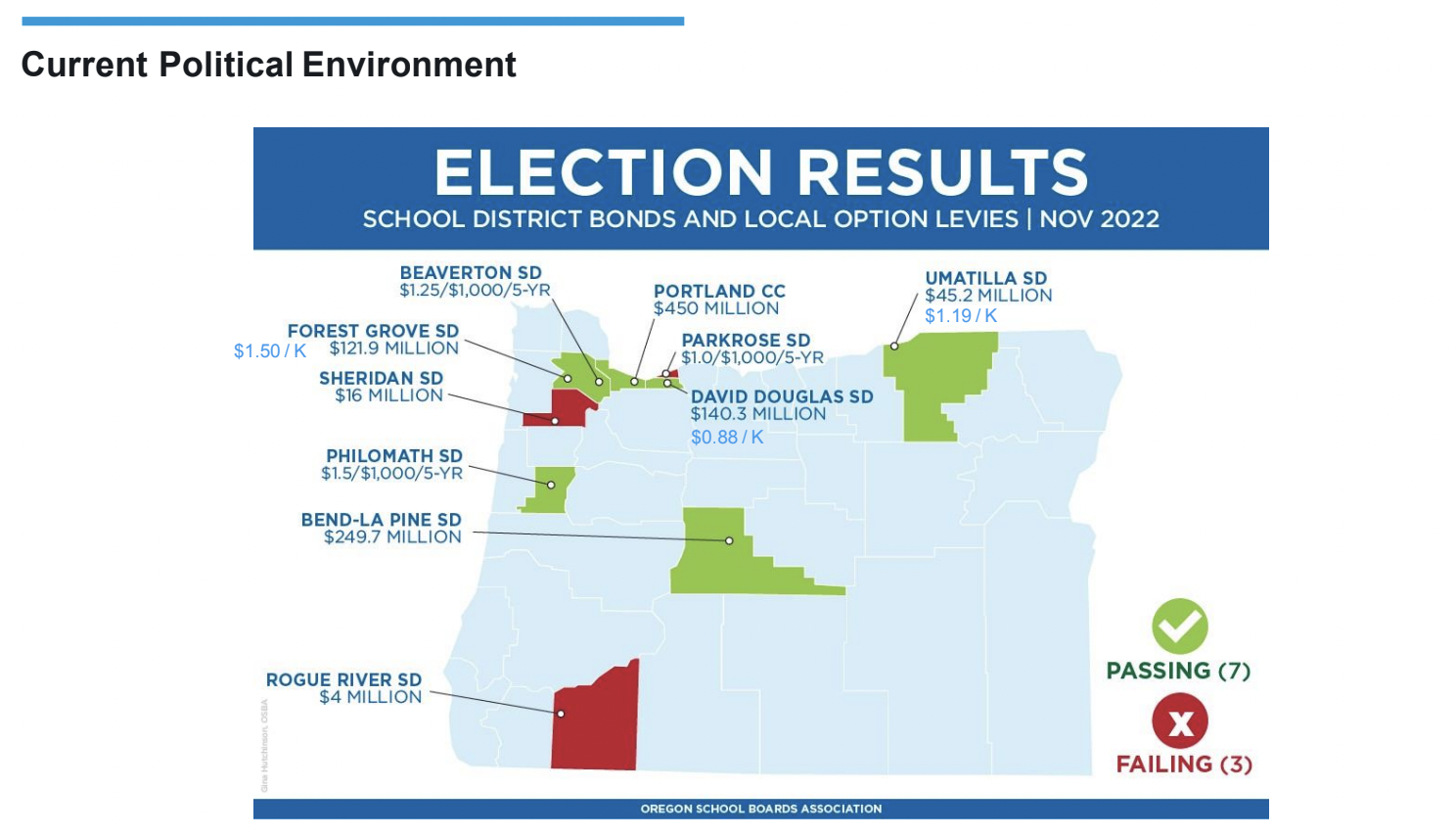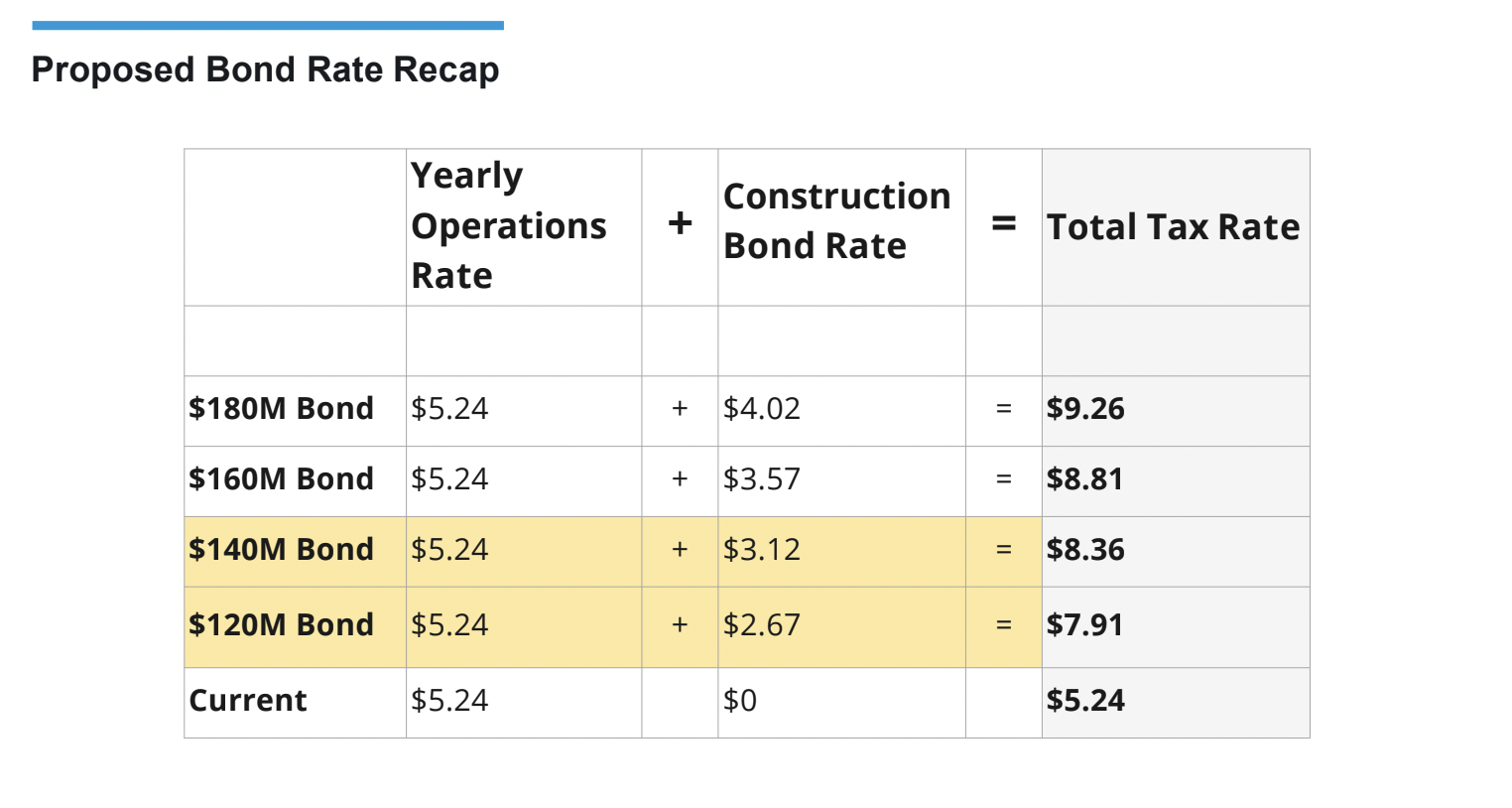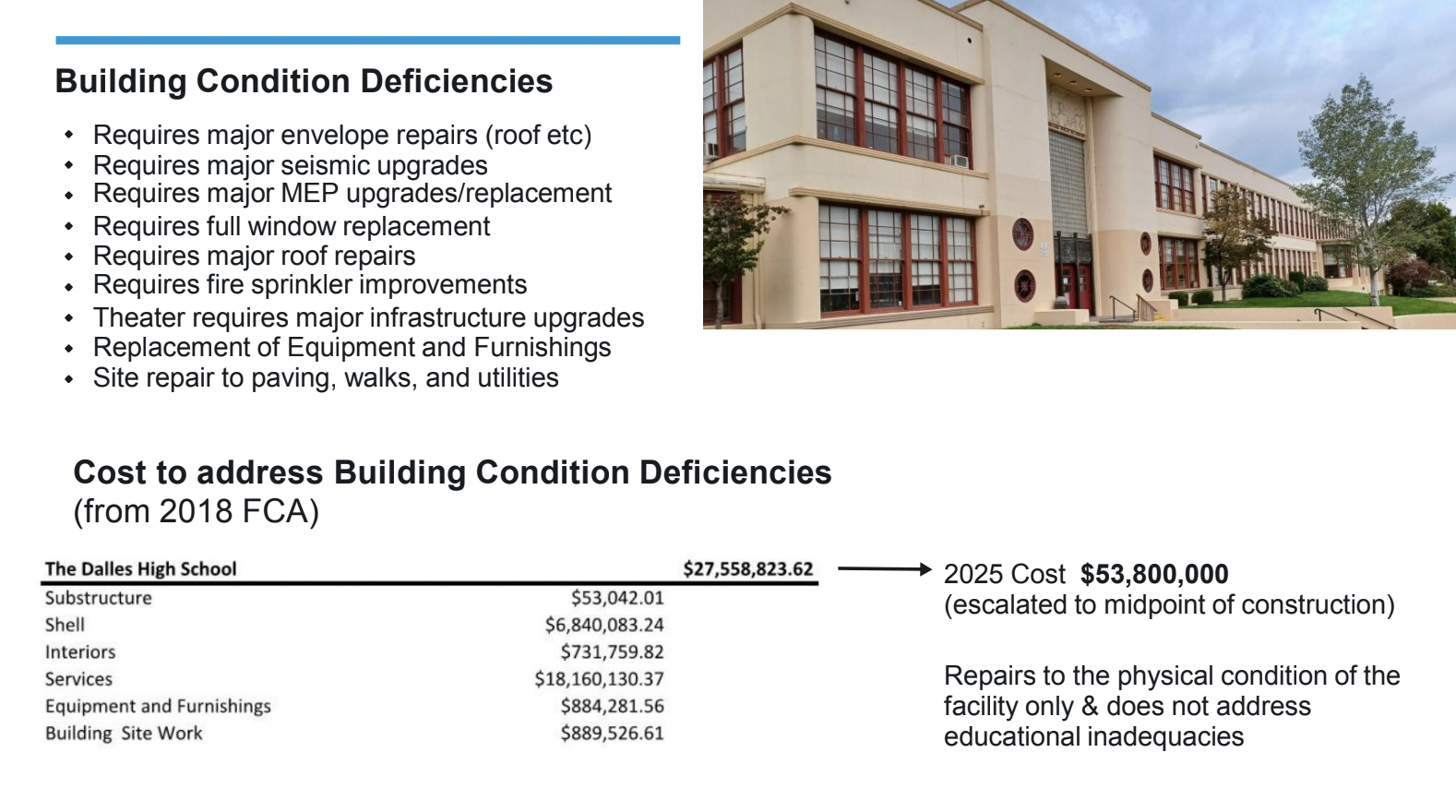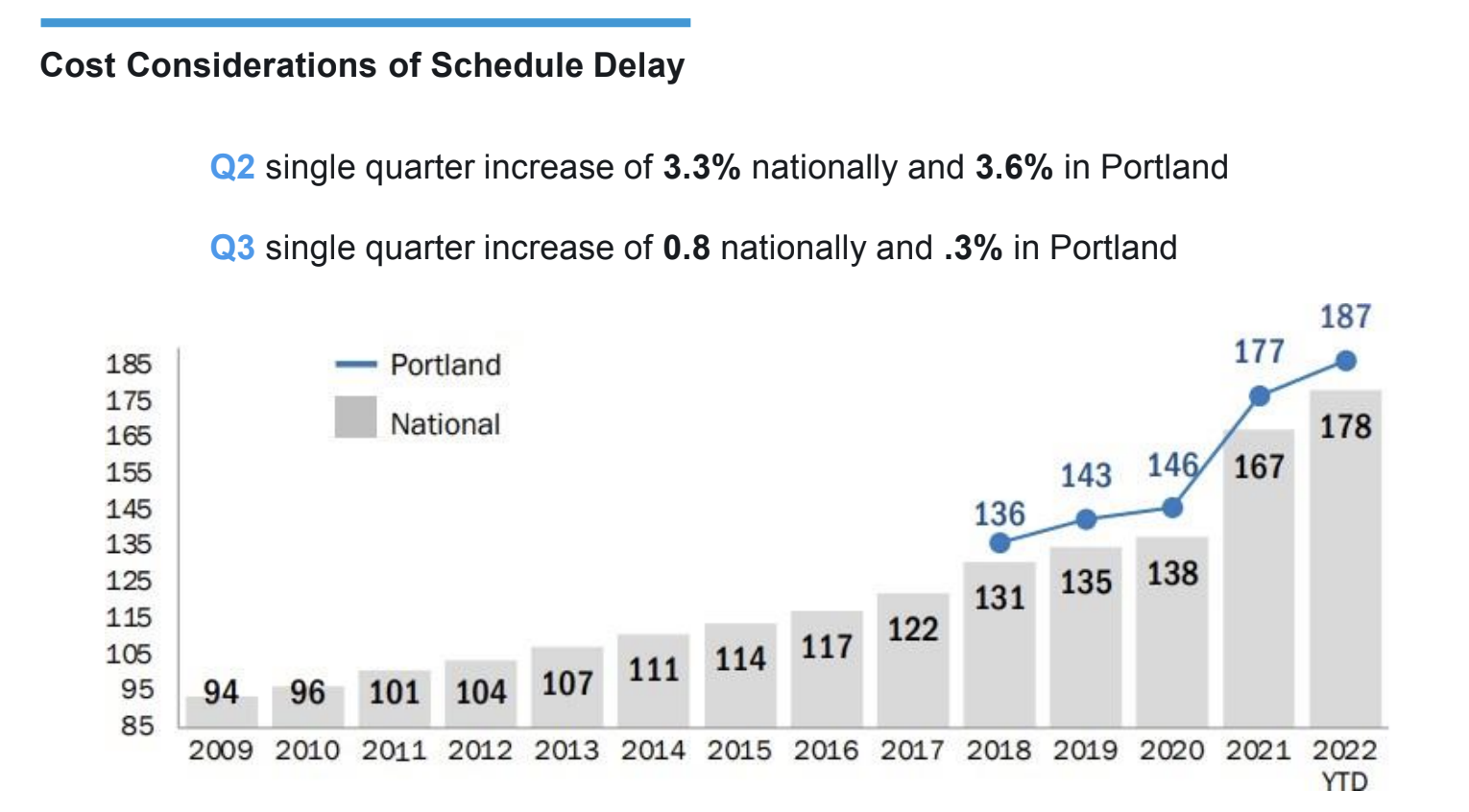Group Considers Proposing a Bond for a New High School In The Dalles - The What, Where, Why and How Much?
By Robin Denning
Community Advisory members and the North Wasco County School District in The Dalles met for the fourth time on Wednesday, Dec. 14 as they consider building a new high school to replace the current 1940 facility.
The discussions have been ongoing since June as community stakeholders advise the School District on the matter of a bond measure for school facilities.
There are some tough decisions to make.
As we work through these details, we’ll be referring to slides in the presentation given by OPSIS, the external consulting firm hired by District 21, to see the entire presentation, you can click here.
Do you repair the current school and keep the same building, classrooms, campus, and program layout?
Or do you set your standards higher and build a new high school with modern classrooms, a secure campus, and a cohesive learning environment designed for modern teaching?
At the core of the mission, the advisory group has its eye on improving student achievement and a future that maximizes student success across the spectrum of learning objectives.
They hope to make a recommendation to the school board in January.
Community Bond Planning Committee
In the initial community groups’ discussions with the independent consulting group OPSIS, the committee worked through several activities and steps to identify the scope and direction of school facilities investment. Including polling and discussions in other governmental meetings.
CCCNews covered elements of their previous meetings and other local governmental steps toward improving schools in more detail:
North Wasco County School District 21 seeks bond measure planning committee members
D21 and Community Advisory Committee Agree on Scope of New School Bond
TD High School Bond polling kicks off this week
TD Survey Results released: High School, Affordable Housing top priority list
During the most recent meeting, the committee looked into the current political climate and the results of recent school bond elections in Oregon to gauge a sense of the wider picture surrounding new school bonds. They found that despite record-high inflation and gas prices, Oregonians have passed seven bonds and failed three in the recent election cycle.
For instance, Forest Grove passed a $121.9-million bond with a 1.50/$1000 per assessed value rate. It was the largest bond ask in Oregon this election cycle. Forest Grove dropped a career technical education (CTE) program to reduce the cost of the project to make it more appealing to voters.
Tax Rates
The educational burden for taxpayers supporting North Wasco County School District is currently comparatively low when compared to other similar districts. That’s because North Wasco has no current school bonds to be paid off. Thus taxpayers are currently assessed with the established operations tax rate which is set at $5.24 per $1,000 of property value. 80% of the current rate of $5.24 pays our local teacher and staff salaries, the other 20% contributes to school upkeep and program. State and federal dollars also make up the annual budget.
The above charts examine comparative districts’ tax rates to offer a comparison.
A simple breakdown would be, In The Dalles, a 30-year, $120 million high school bond would increase the North Wasco tax rate by $2.67 per $1,000 of assessed value. The current established rate for operations of North Wasco Schools is $5.24.
So, if a $120-million bond passed the rate would increase to $7.91 per $1000 of assessed property value.
No Decision Yet
At the latest community advisory committee meeting, members discussed the pros and cons of a $120-million bond versus a $140-million bond. Some argued that a lower bond amount would be more acceptable to voters, while others emphasized the need for a larger bond to adequately address student needs.
Ultimately, the committee did not come to a decision. Rather, they chose to continue their discussions and further assess the feasibility of a school bond at either cost.
The Dalles High School, Main Building built in 1938
New VS. Renovation
One of the factors in this discussion is the cost of renovation versus the cost of replacement. If the district were to spend $53 million renovating the current high school, they would still be left with the same 82-year-old layout, with many of the same education inadequacies, including a lack of space, no cafeteria, a spread campus, classrooms that don’t match up with modern teaching and safety and security concerns.
Editors note: The discussion about school buildings can often overlook the incredible daily efforts and experiences of teachers, students, and other staff in schools every day and in years past. The Dalles also has a lot of history at the Amotan site, and it’s important we honor it. We talk lower in the article about repurposing the Old High School Building and here acknowledge all with lasting memories at The Dalles High School.
To see a modern design, you can watch a tour of Gresham High School on YouTube. The school's design reflects some modern approaches to teaching and learning. Another important factor in the decision is location. With school facilities currently spread across town, the time it takes for students to travel between classes can impact their success. A single campus would eliminate the time wasted traveling to other school sites and improve safety and security.
A 2018 study outlined repairs to the high school that would have cost $27.5 million. However, with the cost of inflation, that estimate has grown to $58.3 million when you plan for estimated completion in 2025.
Some of the major repairs needed, as noted in the presentation, include:
Roof repairs
Seismic upgrades
Heating and cooling replacements
Full window replacements
Major envelope repairs
Fire suppression replacements and improvements
Infrastructure upgrades
Equipment replacements
Site repair
How are State Officials Measuring School Buildings Quality?
One of the ways the State chooses to asses school and public buildings is with the Facilities Condition Index (FCI). The FCI assesses every aspect of the building and compares the cost of renovation versus the cost of rebuilding. According to the state, a score of over 30% is considered to be in "poor" condition and in need of replacement.
The Dalles High School scored a 38% on the FCI, putting it well into the "poor" category. The committee also considered the potential cost savings of a new school, as the current high school requires frequent repairs and maintenance. Issues such as adequate electrical supply, heating and the lack of air conditioning, ADA accessibility, security, a fractured campus and lack of space are current barriers to providing students with a reasonable education. The committee members agreed that a new high school is necessary to adequately serve the students and community of The Dalles.
Staff Described Measurements of Educational Adequacy at TDHS in 2018
The presenter also discussed measurements of educational adequacy. A state metric compiled by staff input and educational standards is used to judge the educational adequacy of facilities in a building. The metric includes factors such as safety and security, support for programs, capacity, technology and instructional aides. A score of 2 or 3 is considered to be an "adequate educational facility," but the high school in The Dalles scored a 1.4, indicating that it does not meet the state's standards for educational adequacy.
"According to the standards laid out by the State, the current high school building simply doesn't support the elements needed for adequate teaching and learning," said a member of the community advisory committee. The current building also lacks safety and security, sufficient space for a full athletics program, enough parking, and accessible career technical education programs.
Security
Food Service
The food service building, aka “Chat & Chew,” is undersized and only has physical space to feed 10% to 25% of the school population. The current high school campus also lacks sufficient common spaces for gatherings. A good portion of students often eat in the hallways and in classrooms. The social impact of this lack of commons spaces can be heard when students talk about their socializing experience at the current school. Having only a small segment of students accessing the free and reduced lunch a the “Chat & Chew” can also create visible social inequities between the haves and have-nots in regard to money to spend on lunch.
Where Would the Current Students Go During Consutruction?
Pragmatically speaking, renovating or replacing the high school on the current site would not provide a location for the high school students, teachers and programs during construction.
Current High School
The current high school site has several buildings on it, including a 35-space parking lot, a 36,000-square-foot CTE wing for autoshop built in the 1970s, and the historic two-story school building itself at 63,000 square feet. The historic building is eligable for the on the National Historic Register and is known for its unique features.
Fun Facts: Did you know the cafeteria now was originally the garage when the school was built? It's also located next to the underground pool.
Repurposing?
It was clear in the meeting that the community advisory committee and its facilitators are dedicated to preserving the current high school building and repurposing it so that it benefits the community in the event a high school bond is sought and passed.
"A clear vision for a new purpose for the high school building is fundamental to getting voter support," said a member of the committee. Potential existing program options for the existing high school building include the district office, early childhood education, and other community services.
Editors note - If you have another good idea, bring it to a school board meeting and share it during public comment. They will value the input.
Amotan Field
Amotan Field has a long history and relevance in Native American culture. The field is known for its wetlands, reeds, basket making, and other historical activities. Did you know that the water well at Amotan Field used to provide water for residents living between the high school and the Columbia River? That's a lot of people!
Location, Location, Location
The proposed location of a new high school site is on the east side of the Wahtonka site, leaving the Wahtonka building intact. Some questions we’re asked about other sites, such as land owned by the district located by the Oregon Veterans Home in Columbia View Heights.
District Chief Financial Officer Kara Flath responded, saying that the property has been identified in the school district’s planning for the growth needs of the community in future years.
Bond Timing
Another key issue is the timing of a potential bond measure. The advisory committee is considering holding the election in May 2023 or November 2023 if they put it to voters. May has the advantage of being an off year with a less cluttered ballot and more campaigning space. A November election would give the committee more time for community education with hopes of building support for the bond measure.
If a bond is going to be sought, the sooner the better. With inflation, the price of materials and labor is also a factor. The longer the community waits, the higher the potential cost of materials and labor for a new high school.
A standard metric used to track the cost of building materials and labor visualized by year.
Hope for Costs Plateauing
Despite the discussion of a potential recession, the facilitator, Mike, said that there is a tendency to see a flattening of the market in terms of material costs and other building costs.
"Projects that are going on right now are seeing lots of good general contractor competition, which will lead to a potentially better contracting market," he said. The districts that have recently passed bonds stand to benefit the most from this flattening of the inflation curve.
Lowering the Cost with Grants
The district has applied for an OCISM grant, which would provide up to $4 million in funding if the bond measure passes. Maupin and Dufur have both recently received these grants and were able to pass school improvement bonds in recent years.
However, being eligible for the grant is a much bigger undertaking than simply applying for it. The criteria include a long-range facility and needs assessments plans. But a good part of the work is already done such as the needed 37% FCI metric discussed earlier. The School District is applying for all the grants they’re eligible for.
At the meeting, the conversation flowed inward and focused on important choices facing the group. These included whether to move forward with a bond measure. If so, what will the bond measure include, when to hold the election (May or November), and how much to ask for - $120 million or $140 million or another number.
What’s Next
The advisory group will meet again in the new year to work through the information and make tough choices on whether to move forward with a bond and then propose a final plan to the community.








